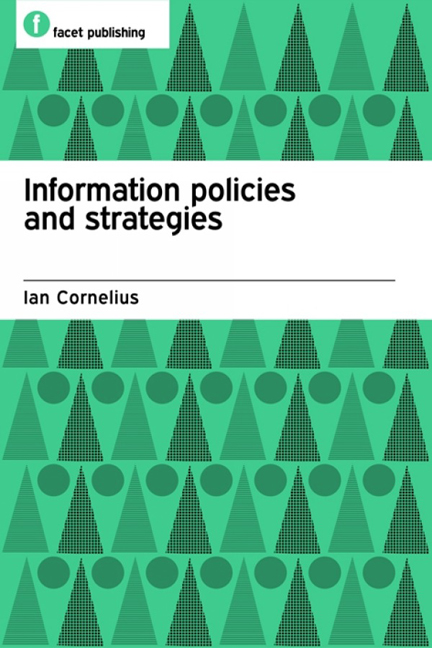Book contents
- Frontmatter
- Dedication
- Contents
- Preface
- 1 Introduction
- Part 1 Contexts for information policy
- Part 2 Information policy sectors
- 5 Censorship, freedom of speech and freedom of expression
- 6 Arguments for protecting speech
- 7 Privacy and data protection
- 8 Freedom of information
- 9 Intellectual property
- Part 3 Conclusion
- References and reading list
- Index
6 - Arguments for protecting speech
from Part 2 - Information policy sectors
Published online by Cambridge University Press: 08 June 2018
- Frontmatter
- Dedication
- Contents
- Preface
- 1 Introduction
- Part 1 Contexts for information policy
- Part 2 Information policy sectors
- 5 Censorship, freedom of speech and freedom of expression
- 6 Arguments for protecting speech
- 7 Privacy and data protection
- 8 Freedom of information
- 9 Intellectual property
- Part 3 Conclusion
- References and reading list
- Index
Summary
IN OUR CONSTRUCTION of information policy we need to have an understanding of how broad explanations of social movements are to be accounted for – whether we want to believe them, accommodate the possibility of them, or ignore them – and we also need to understand how the policies will work in day to day life at ‘street level’. In between these two are the instruments and mechanisms that are meant to give effect to the intentions we have. These mechanisms need a rationale, a set of arguments that form the basis for the formation of policy. These arguments seem to stand on their own, so when we have discussions about censorship, intellectual property or whatever, we tend to see the issue in terms of the arguments that can be brought to bear about that particular issue. The strength of these arguments will have an impact on the effectiveness of the policy or law that is put in place, and they must be seen in the broader context of information policy overall. Whatever social analysis we might have we should also recall that often information policy issues tend to be secondary issues – so the protest in London in early 2009 is seen as an issue about world economic government, capitalism or policing policy, but rarely as an information issue, even though the intention of the protesters was to convey a message.
In constructing the argument there are three elements to consider. As an aside, let us just explain what we mean by the term ‘an argument’.
We will often say that someone is arguing for a particular point, and that is the sense in which we are using the term, not in the sense of a strongly expressed disagreement. An argument is a claim supported by a series of testable propositions, where evidence of some sort is connected by some framework of justification to the main claim. Complex arguments may have many stages in each of which the claim and subordinate claims must be tested. First, the argument must offer a convincing or acceptable explanation of the real world situation. Second, the analysis of process and the desired outcomes must also be convincing.
- Type
- Chapter
- Information
- Information Policies and Strategies , pp. 103 - 124Publisher: FacetPrint publication year: 2010



